When Will We be Able to Purchase ZET Tickets via Mobile App?
January the 4th, 2023 - If you've ever used Zagreb's iconic (and usually blue) public transport, you'll have wondered just when it will catch up and allow people to purchase ZET tickets via mobile application (app) instead of at iNovine, Tisak, or on board the tram. It seems that we've finally got some good news on that front for 2023.
With the digital transformation seeping into just about every corner of everyday life, the green transition isn't far behind it. Tram travel is and always has been a very environmentally friendly transport option, and something the City of Zagreb does very well in, ferrying countless people around the capital day in, day out. Now the digital age might finally be catching up with it.
As Poslovni Dnevnik writes, over the first half of this year, the activation of the brand new ZET mobile application, which has been awaited and being announced for several years now, is finally expected. The new ZET administration also announced that, in addition to being able to purchase ZET tickets through the new app, it will also be possible to check the tram and bus timetables, as well as the traffic situation in the city, according to a report from Vecernji list.
By the way, it's also worth noting that the up and coming ZET application is something that has been being waited on for many years now, but so far there have been no serious developments, at least not from this Zagreb city-based company. Buying ZET tickets online is something most would more than reasonably be expecting to be able to do by now, and it's nice to see that the powers that be within Zagreb's public transport are making it a reality.
It doesn't stop there, as addition to the new ZET application, we residents of Zagreb should also soon receive a renewed fleet, which will include twenty brand new buses and the same number of new trams.
For more, check out our dedicated news section.
Tram Traffic in Zagreb Suspended This Weekend Due to Marathon
October 9, 2021 - The traditional Zagreb marathon is being held, so tram traffic in Zagreb will be suspended for most of the city center. The last tram will pass through the central city square at around 7.45 am.
According to Poslovni Dnevnik, the celebration of the marathon in Zagreb will cause changes in the usual circulation of the electric tram system in the capital, specifically in the city center. Tram traffic in Zagreb will see various routes suspended throughout the day, and therefore citizens should be aware. The City informed exactly which streets:
- Today, from 8.30 to 12.30: Trg bana J. Jelačića - Jurišićeva - F. Račkog - Smičiklasova - Martićeva - Rakovčeva - Štoosova - Harambašićeva - Maksimirska - Svetošimunska - T. Miloša - Fakultetsko dobro - Maksimirska c. Maksimirska c. - Wallachia - European Square
- Tomorrow (10.10.2021), from 9.00 to 16.00: Trg bana J. Jelačića - Jurišićeva - Vlaška - Maksimirska v. - Svetošimunska v. - Av G. Šuška - Maksimirska c. - Harambašićeva - Štoosova - Rakovčeva - Martićeva - Smičiklasova - F. Račkog - Jurišićeva - Palmotićeva - Amruševa - Zrinjevac - Teslina - Masarykova - Prilaz G. Deželićlike - Ul. Filipovića - Ž. Maričića - Ilica - Britanski trg - I. Kukuljevića - Zelengaj - Britanski trg - Ilica - Trg bana J. Jelačića.
Tram traffic will be suspended for most of the city center, so the last tram will pass through the central city square at around 7.45 am. Tram line 13 will not run until the end of the marathon, while all other tram lines, except lines 9 and 15, will run on the changed routes:
Line 2: Zapadni Kolodvor - Glavni Kolodvor - Žitnjak - Savišće
Line 4: Savski Most - Glavni Kolodvor - Borongaj
Line 5: Prečko - Ulica grada Vukovara - Žitnjak
Line 6: Zapadni Kolodvor - Glavni Kolodvor - Sopot
Line 7: Savski most - Zaprudje - Autobusni Kolodvor - Branimirova - Trg žrtava fašizma
Line 11: Zapadni Kolodvor - Glavni Kolodvor - Borongaj
Line 12: Ljubljanica - Ulica grada Vukovara - Žitnjak
Line 14: Trg žrtava fašizma - Glavni Kolodvor - Savska - Velesajam - Zapruđe
Line 17: Prečko - Vodnikova - Glavni Kolodvor - Borongaj
For more information on the Zagreb tram service and how to get around the country's capital, be sure to check Total Croatia's Zagreb in a Page complete guide here. Now in your language!
For more on lifestyle, follow TCN's dedicated page.
Zagreb’s ZET Marks 130 Years of Public Transport in City
ZAGREB, 5 Sept, 2021 - Zagreb's public transport company ZET on Sunday marked its 130th anniversary in memory of 5 September 1891 when the first horse-driven tram carriage service started in the city.
Therefore the Zagreb Municipal Transit System or ZET (standing for the Zagrebacki Elektricni Tramvaj company) observes 5 September as the anniversary day of the beginning of the organised city transport system.
The first electric tramcar was put in service in the streets of Zagreb on 18 August 1910. In one year's time, the network of electric street cars replaced horse-driven trams.
In 1931, ZET included buses for the first time as the new mode of public transport in Zagreb. ZET operates a funicular from downtown to uptown Zagreb, which is the shortest funicular route in the world.
The ceremonies marking the 130 anniversary include a concert of pop songs aboard an open-top ZET bus.
This city company has 266 trams in its fleets, and 142 of them are low-floor trams. ZET has 480 buses.
The company transports more than a million passengers on a daily basis.
For more about Croatia, CLICK HERE.
Tramlines Blocked Over 60 Year Unresolved City of Zagreb Land Dispute
February 14, 2021 – A resident of suburbs to the north of the Croatian capital today blocked the city's tramlines with a fence in protest over an unresolved City of Zagreb land dispute. He threatened to repeat the action over forthcoming days
Marijan Kos and his neighbours are seemingly sick of waiting. The City of Zagreb land dispute they and their families have been involved in has been dragging on for sixty years. Many have watched their neighbours die awaiting a resolution.
They are residents of the north Zagreb suburb of Gračani, just before Mount Medvednica and almost the northernmost point to where city trams travel. And they claim ownership of land over which the trams now pass. Nobody disputes their claim. But, following the compulsory confiscation of their property for passage of the tramway network, they have still not been reimbursed. So, this morning, Marijan Kos took matters into his own hands.
Carrying a prepared fence, another man and Mr Kos - who is president of the neighbourhood's local committee - stood on either side of the tram line to block an approaching tram. They waited for only 30 seconds before backing down, then allowed the driver and his passengers to continue on their way. The Zagreb land dispute protest was symbolic. This time.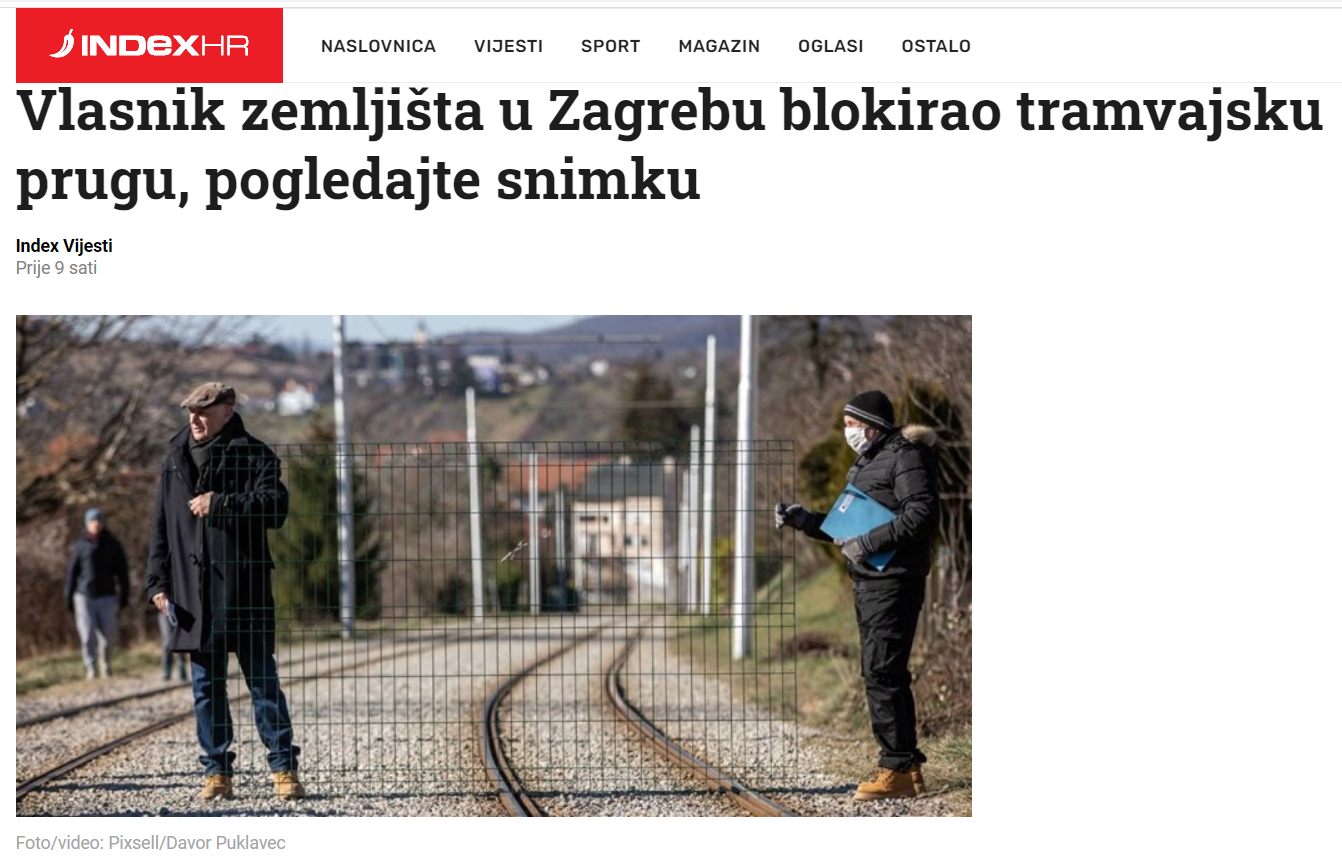 How Croatian portal Index carried the story of today's Zagreb land protest on the tramlines © Index screenshot
How Croatian portal Index carried the story of today's Zagreb land protest on the tramlines © Index screenshot
"With today's action we want to warn the City of Zagreb of the property-legal problem that has not been resolved since 1959,” Mr. Kos told reporters who had gathered to witness the Zagreb land dispute protest. “Since that year, we've had a final decision by which ZET (the tram network operator) is obliged to compensate the inhabitants of Gračani for the land confiscated for the construction of the tram line from Mihaljevac to Gracanski Dolj. That's about 166 land registry entries (and) there are about the same number of owners - some have already died and had no heirs. We are talking about 68,926 square meters of land on both sides of the tram line.”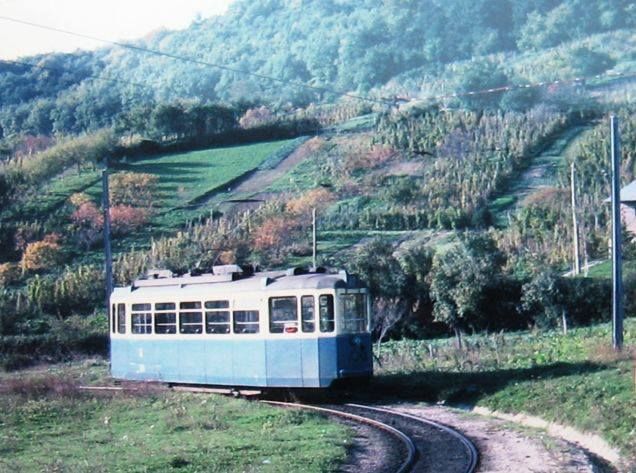 The tramline has run through the disputed land in Gracani for well over 50 years © Zagreb Facts
The tramline has run through the disputed land in Gracani for well over 50 years © Zagreb Facts
Mr. Kos invited the City to talk and uphold the standing agreement because, he says, it is in everyone's interest to resolve the matter in the best possible way. According to Vecernji List, who had a reporter at the scene, Mr. Kos reminded everyone that this tramline - once the mountain cable car opens - will become one of the main means of transport for all Zagreb residents and tourists to reach the top of Mount Medvednica.
Signalling that the Zagreb land dispute may escalate over forthcoming days, Mr. Kos went on to say; “We have prepared a fence and in the next few days we plan to install it and close the passage of trams if the City of Zagreb does not invite us to a meeting to try to solve this problem that has been dragging on for 50 years.”
Zagreb Trams - Iconic and Integral to Life in Croatia's Capital
November 20, 2020 – Today is the 20th anniversary of the completion of the Zagreb trams network. Namely, on this day in 2000, the last current line from Jarun to Prečko was opened. To celebrate, we take a look at the iconic, blue trams of Zagreb
It's all too easy to take for granted the things you see every day. That's certainly true of city residents in their feelings for Zagreb trams. As it currently stands, the Zagreb trams network was completed on 20th November 2000, when the existing line to Jarun was further extended to Prečko, which lies to the west of the city centre. In the two decades that have followed, Zagreb trams have cemented their place as an icon of the city, have helped changed the cityscape of Zagreb and have facilitated the friendships, education, careers, relationships and businesses of the Croatian capital over millions of journeys. All without much fanfare or celebration.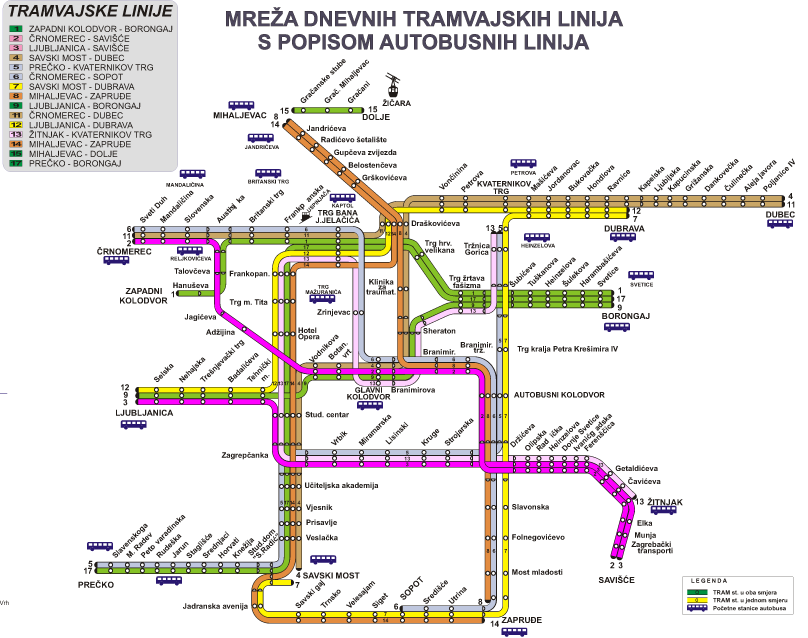 The Zagreb trams network
The Zagreb trams network
The Zagreb trams network consists of 15 lines which connect suburbs as far west from the centre as Prečko (8 kilomtres), as far east as Dubec (8 kilometres), north to Mihaljevac (3 kilometres) and south to Avenue Dubrovnik in Novi Zagreb (an additional line, running further south to Velika Gorica, servicing Zagreb Franjo Tudman airport, is planned). Throughout the night, four lines remain, connecting essential workers, night-time workers and late-night revellers (although they are sometimes replaced by night buses due to maintenance works). © Romulić & Stojčić
© Romulić & Stojčić
The completion of the line to Prečko catalysed the expansion of the westerly-lying suburbs of Špansko and Prečko. The change visited upon the rest of the city by the Zagreb trams network has been no less fundamental. Certainly, at weekends, Zagreb can confidently claim to be a 24-hour city because of its trams. Day or night, no place within the city suburbs is too far to reach because of Zagreb trams.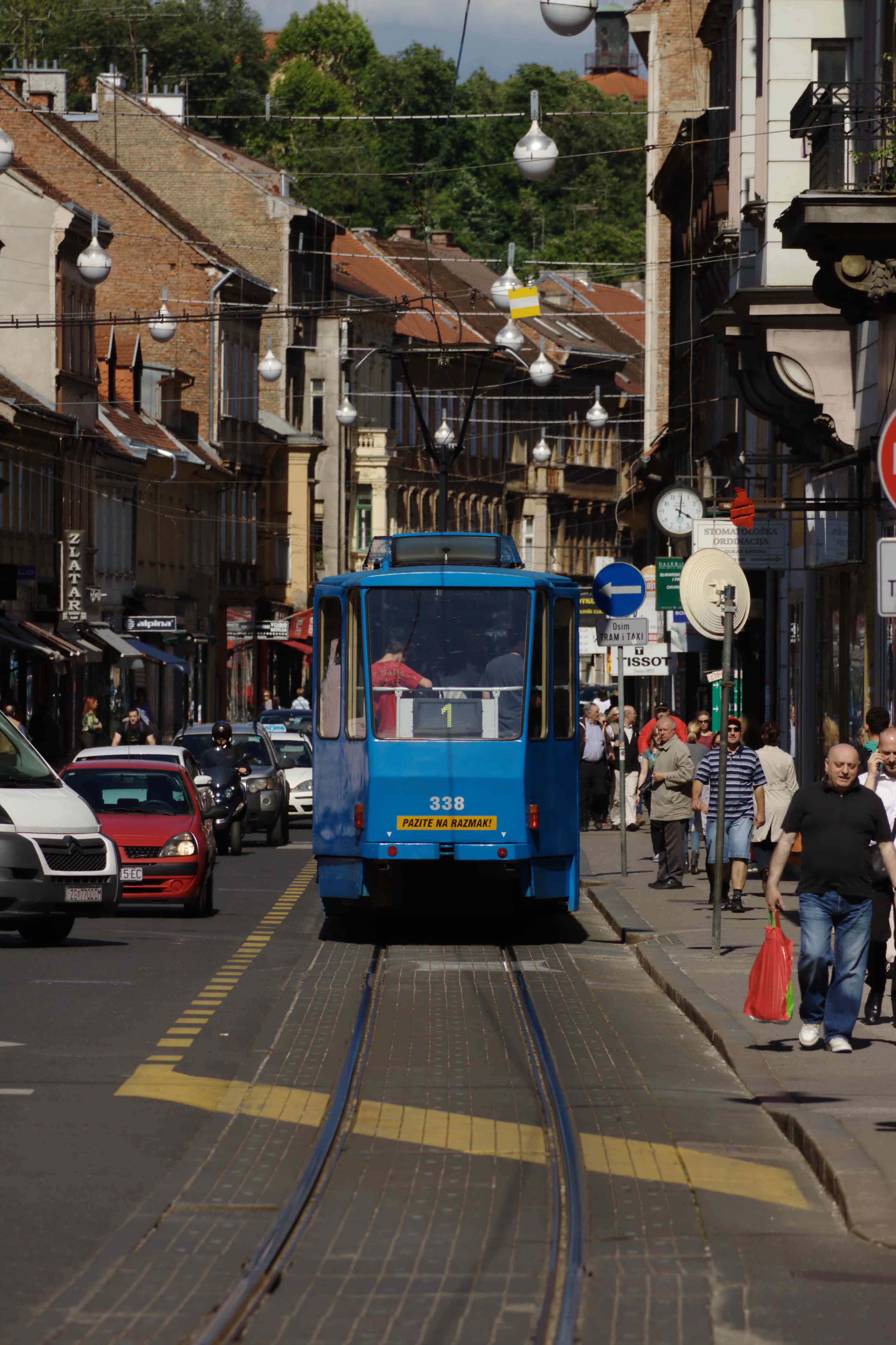 © Aktron / Wikimedia Commons
© Aktron / Wikimedia Commons
So reliable and well used are Zagreb trams that it's perhaps understandable why they are sometimes taken for granted. Whole generations now living in the city do not even know a Zagreb without a tram network. Its importance to all was put into sharp focus during the early part of 2020 when the Zagreb trams network was temporarily closed in response to the COVID-19 pandemic. Perhaps only then was the true scale of integration between Zagreb trams and the lives of city residents truly recognised. 'You don't know what you've got 'til it's gone.'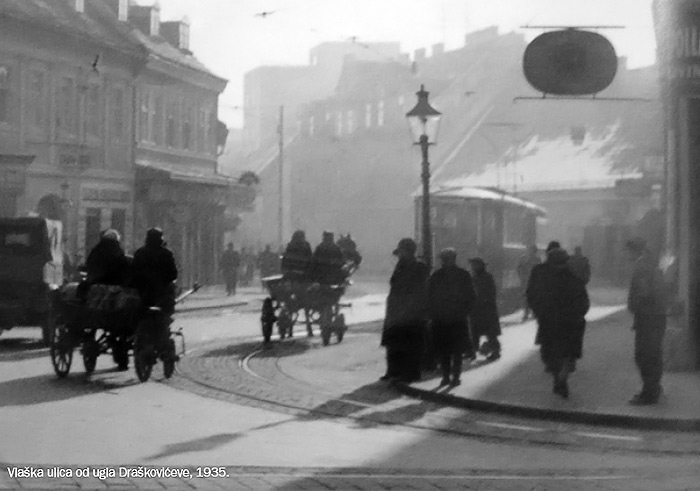 Zagreb trams on the corner of Vlaška and Draškovićeva streets in 1935 © Public domain
Zagreb trams on the corner of Vlaška and Draškovićeva streets in 1935 © Public domain
Lest we forget to give credit where credit is due, here are some interesting facts about Zagreb trams.
The Zagreb trams network was started in 1891 with the opening of the first line. Back then, the trams were pulled by horses - the electric tram didn't debut in Zagreb until 1910. The first journey started at the site of today's Technical Museum and the first track ran for some 8-kilometres. So fascinated were Zagreb residents with the introduction that some 20, 000 passenger journeys were made on the second day. The population of Zagreb at the time was 40, 000.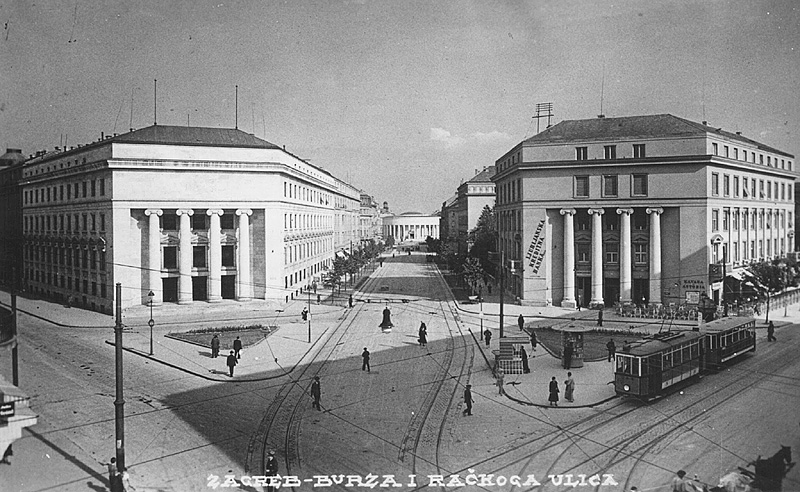 The route from Draškovićeva to Džamija in the 1930s © HappyV
The route from Draškovićeva to Džamija in the 1930s © HappyV
Osijek in Slavonia, east Croatia, was the first city in the country to have trams. The first international railway line into Croatia was built to facilitate holidays on the Kvarner coast, but the rail line ended in Rijeka. The upper echelons of Austro-Hungarian society who took this train were transported to their preferred destination – Opatija – by tram.
The most-modern low floor trams that now run in Zagreb were introduced in 2005.
There are two separate tram stations in Zagreb which have the same name – there are Heinzelova stations on the lines both to Savišće and Borongaj.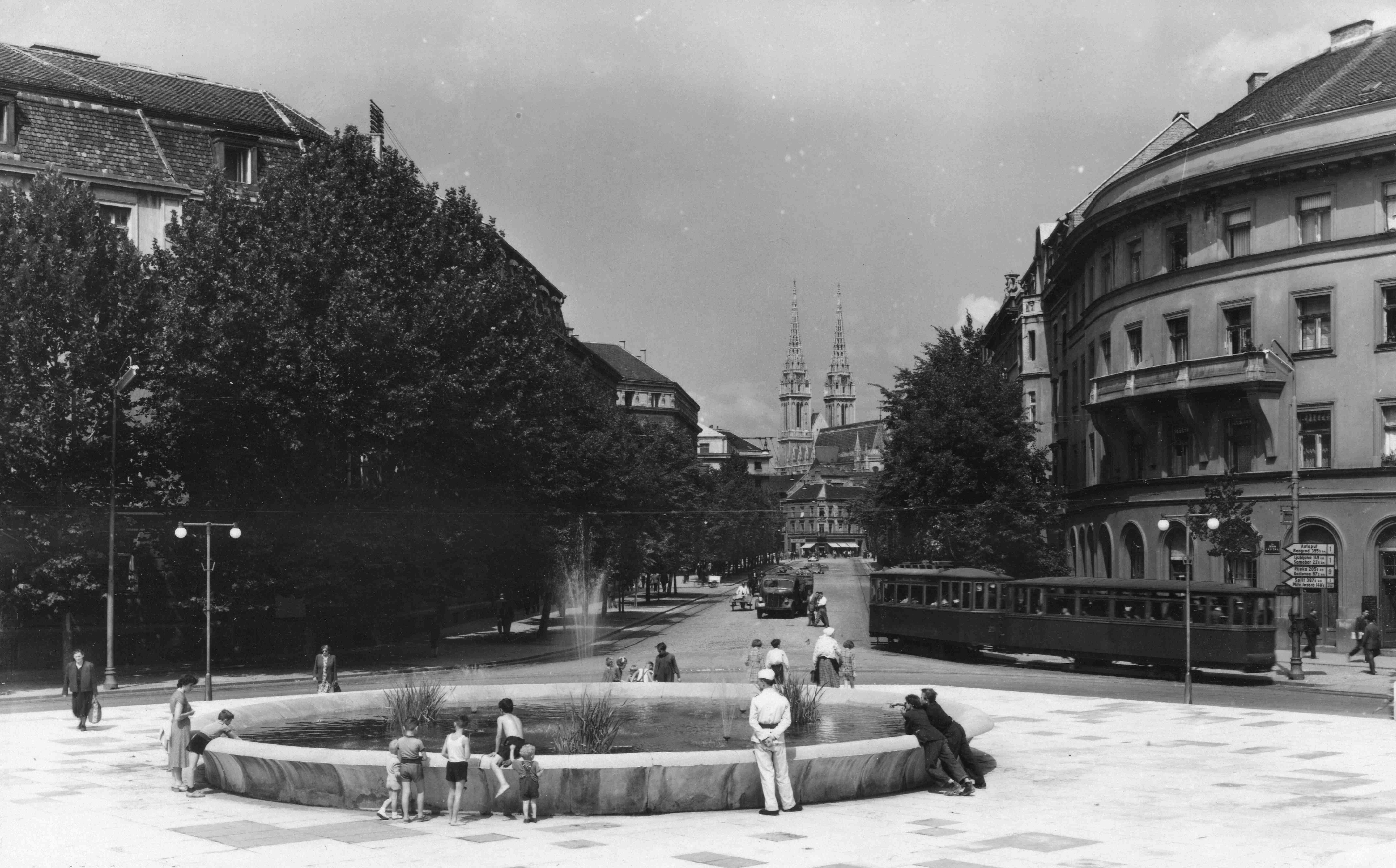 The view from Džamija up to Draškovićeva and the cathedral in 1947 © Romák Éva
The view from Džamija up to Draškovićeva and the cathedral in 1947 © Romák Éva
The Zagreb trams network has 116.3 kilometres (72.3 miles) of metre gauge track. It is the same track all over the city, except for the line which runs north to Mihaljevac, which is unique. This line is both the fastest and the shortest in the Zagreb trams network. It services some of the most desirable Zagreb suburbs in which to live. But, of course. The inclusion of the Mihaljevac line brings the track total to 120 kilometres.
Children under the age of six do not require a ticket to ride on Zagreb trams.
There are six different types of tram currently running on the network. Zagreb residents have given nicknames to different models over the years – Đuro was named after a factory that made it, Bik, meaning bull, got its name because it was stronger than older models, Čeh was named after Czechoslovakia, the country where it was produced, Katica, Genšer and Zeko meaning bunny. Everyone likes the most modern trams in summer, because they have air conditioning but, in winter, city residents greet with joy the approach of older models on their route – the seats are heated to a toasty temperature.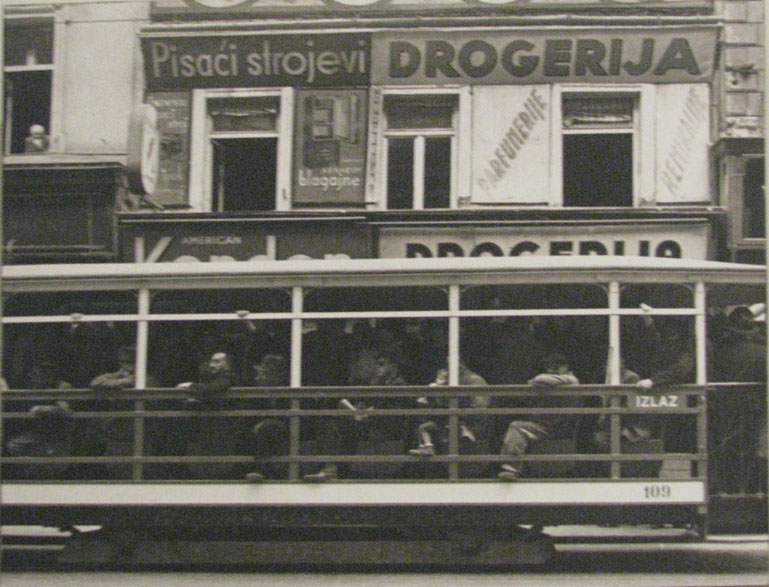 A photograph of how the open carriages of Zagreb trams used to look. The original of this photograph can be found in © Zagreb City Museum
A photograph of how the open carriages of Zagreb trams used to look. The original of this photograph can be found in © Zagreb City Museum
The longest single direction journey you can make on Zagreb trams is between Prečko in the west of the city and Dubec in the east. The journey takes around 76 minutes. You have to change tram only once to make this journey.
Apart from being the most environmentally friendly motorised public transport option in the city, the trams have massively contributed to Zagreb being a modern eco-friendly capital. Many city tram networks run down the middle of roads. While some lines in Zagreb are also placed here, many instead run at the sides of roads. This positioning – plus the way the lines sit in the road – make them problematic for cyclists. And this is partially the reason why Zagreb has 220 kilometres of dedicated cycle paths which exist not on the roads, like in other cities, but on the pavements.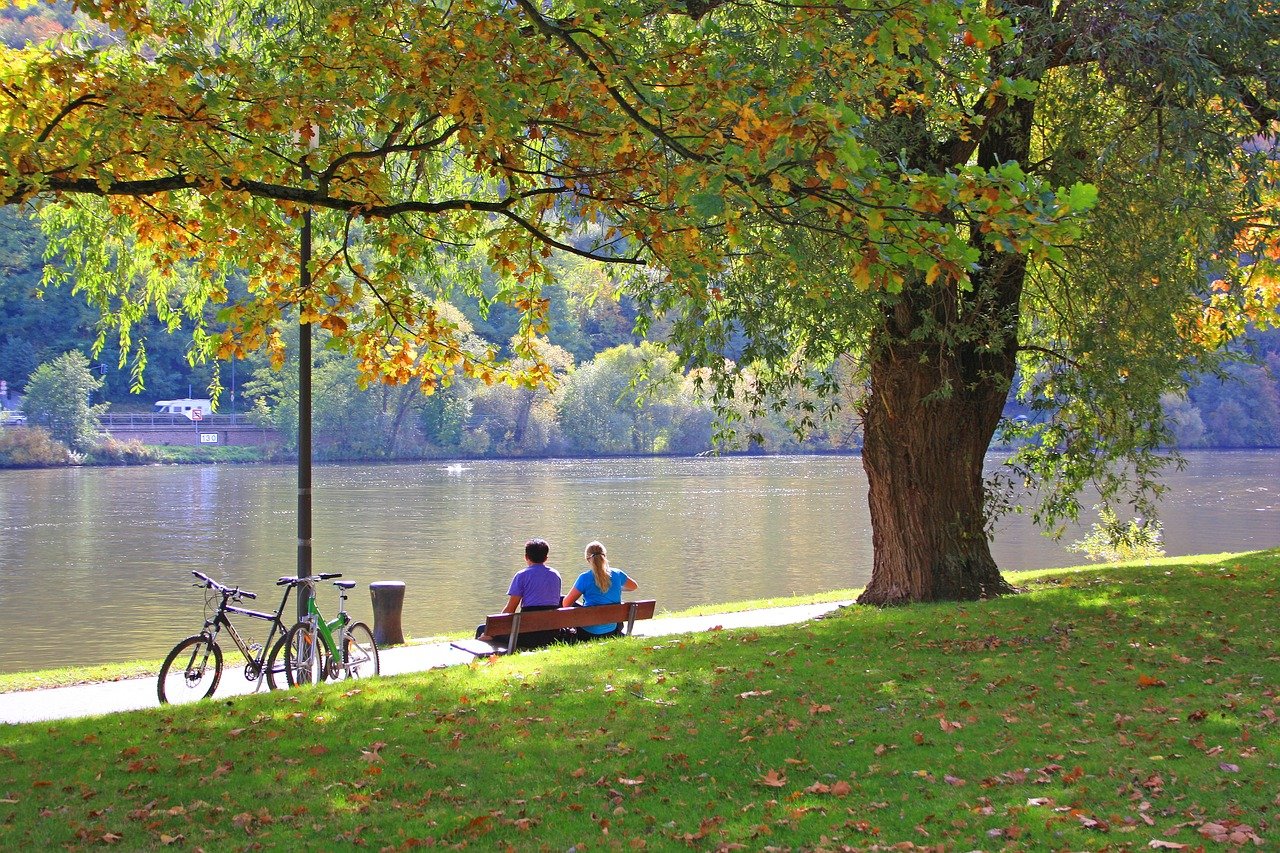 Zagreb's generous 220 kilometres of dedicated cycle paths come partially as a result of the positioning and construction materials of the Zagreb trams network © G Schneider
Zagreb's generous 220 kilometres of dedicated cycle paths come partially as a result of the positioning and construction materials of the Zagreb trams network © G Schneider
One of the world's worst tram accidents happened in 1954 on the Zagreb network. The tragedy took place on the old, steep stretch running near Mirogoj cemetery. Nineteen passengers were killed and thirty seven were severely injured.
During the day, each line runs on average every 5–10 minutes. Almost all stations on the Zagreb tram network sit on at least two lines.
Zagreb's tram network transported 204 million passengers in 2008.
A few years ago, the lowest fare tram ticket was 10 kuna. Zagreb trams were then often ridden by people without a ticket (and still are). The company who runs the tram network, ZET, decided to decrease the price of the lowest ticket to 4 kuna. Since doing so, many more people buy a ticket for Zagreb trams. You can travel for 30 minutes on any tram or trams with a 4 kuna ticket.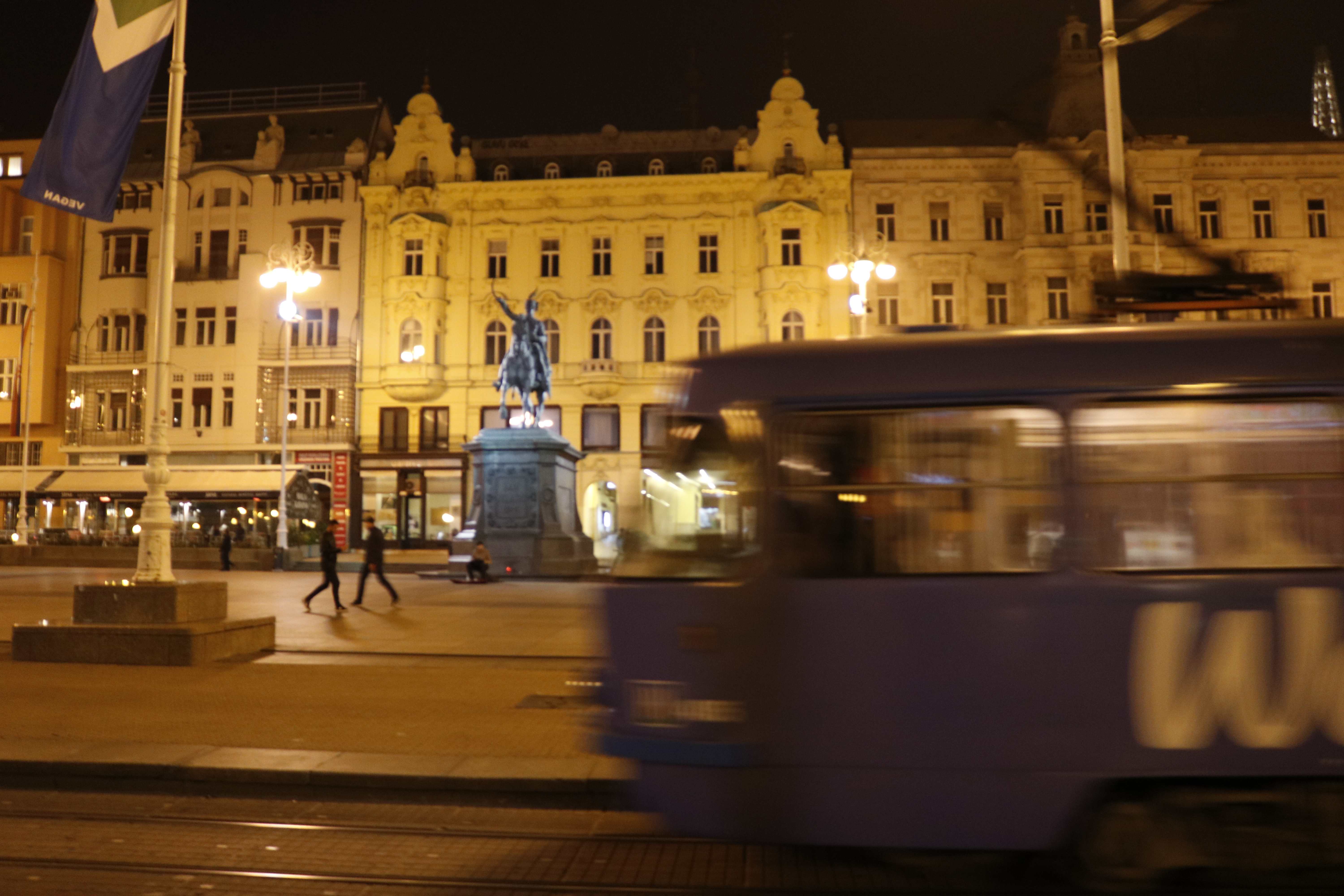 © Marc Rowlands
© Marc Rowlands
All uncredited photographs courtesy © ZET
Novi Zagreb Will Have No Trams On Sunday Morning 16 August
August 15, 2020 - Replacement bus services will be the only public transport for people travelling south of the Sava tomorrow morning
A large section of Zagreb will be without trams on Sunday morning 16 August. The whole of the tram network servicing Novi Zagreb will be closed due to the installation of electricity poles.
The disruption will affect all morning trams, with normal services in most areas resuming after midday. Replacement bus services will be the only public transport available to people travelling to and from the area south of the Sava.
During the works, tram line 14 will run from Mihaljevac only to the Sava Bridge. Also, due to additional construction works near Draškovićeva Street, tram lines 4, 9 and 13 will operate with partially changed routes on the same day.
Line 4: Sava bridge - Central station - Branimirova - Branimirova tržnica - Šubićeva - Kvaternikov trg - Dubrava – Dubec
Line 9: Ljubljanica - Savska - Frankopanska - Ban Josip Jelacic Square - Trg žrtava fašizma - Borongaj
Line 13: Žitnjak - Ulica grada Vukovara - Savska - Trg bana Josipa Jelačića - Glavni kolodvor - Branimirova - Branimirova tržnica - Šubićeva - Kvaternikov trg.
Will Milan Bandic's Zagreb Airport Tram Plans Go Ahead?
Mayor Milan Bandic wants to expand the Zagreb tram network and introduce a tram from Kvaternikov trg (Kvaternik's square) to a residential location close to Zagreb's Franjo Tudjman Airport. Will the mayor's Zagreb Airport tram project manage to get off the ground?
As Vedran Marjanovic/Novac writes on the 4th of March, 2020, the City of Zagreb's administration has announced that Geoprojekt and Elektroprojekt will produce the Zagreb Airport tram project's technical documentation for the construction of the line which will go from Kvaternikov trg to the settlement of Velika Kosnica, located close to Zagreb's Franjo Tudjman Airport, for a price tag of three million and 683 thousand kuna.
The offers put forward by Geoprojekt and Elektroprojekt weere selected as the most favourable of all at a public tender launched by Zagreb's Public Procurement Office, initially announced back at the end of 2016. However, according to the latest information from the Public Procurement Office, the value of the contract has since increased by 683 thousand kuna.
According to the general urban plan of the Croatian capital city, the new tram line would connect Kvaternikov trg and Velika Kosnica with a total length of seventeen kilometres, or 8.5 kilometres with a two-lane traffic line. The aforementioned length doesn't take into account any possible extensions of the tram line from Velika Kosnica to the City Stadium in Velika Gorica and Zagreb Airport.
The envisioned Kvaternikov trg-Velika Kosnica or ''Zagreb Airport tram'' route will be divided into four different sections. The first section relates to the construction of the line along Heinzelova in order to directly connect Kvaternikov trg with Ulica grada Vukovara (Vukovar street). Two sections then relate to the construction of the tram line along Radnicka cesta (road), across Savisce all the way to Domovinski most (Homeland bridge) and the rest relates to the line from Domovinski most to Velika Kosnica.
The planned ''Zagreb Airport tram'' route envisages twelve tram stops, and ZET wouldn't introduce any new tram lines according to the aforementioned guidelines, but would divert the number 2 line now operating from Crnomerec to Savisce. According to the plans, the two would connect the railway and bus stations to Velika Kosnica, or to Zagreb Airport, when the route leads to the airport.
Preparations for the construction of the tram line to Velika Kosnica began back at the end of 2016, when Zagreb Mayor Milan Bandic announced that the railway would be finished in 2019, and the total value of the investment stood at 50 million euros. Considering the fact that the contract with Geoprojekt and Elektroprojekt has been established only now, it's uncertain when the construction of the line could actually begin.
Make sure to follow our dedicated business page for more.


